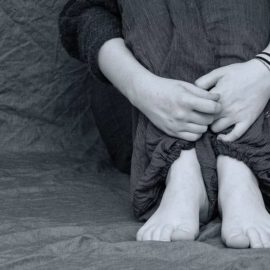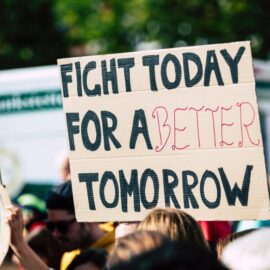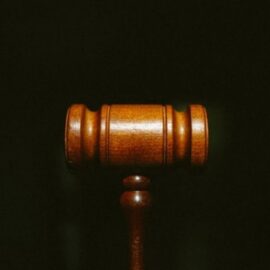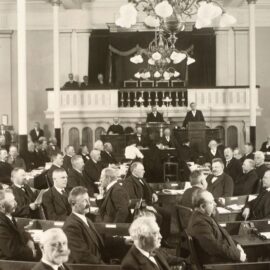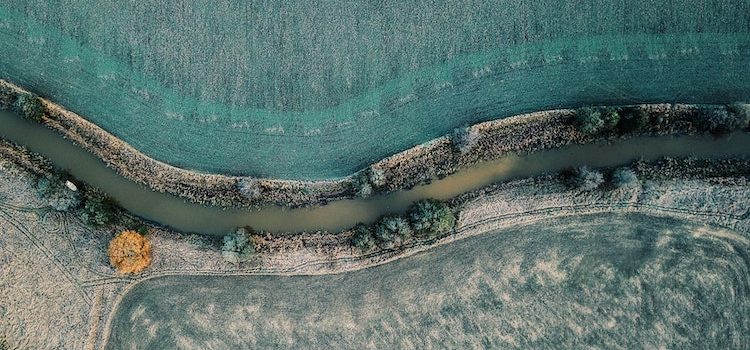
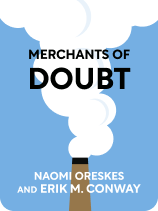
This article is an excerpt from the Shortform book guide to "Merchants of Doubt" by Naomi Oreskes and Erik M. Conway. Shortform has the world's best summaries and analyses of books you should be reading.
Like this article? Sign up for a free trial here .
What is the nuclear winter theory? How did doubt-mongering affect public awareness and policy about it?
During the Cold War, the nuclear winter theory inspired scientific research—as well as doubt-mongering. In Merchants of Doubt, historians Naomi Oreskes and Erik Conway identify the people and organizations who sought to discredit the science that threatened their agenda or ideology.
Read more to learn how merchants of doubt influenced the debate about the nuclear winter theory.
The Origins of the Nuclear Winter Theory
During Reagan’s term, astrophysicists at NASA Ames Research Center were working with computer models to assess the effects that dust in the atmosphere has on the surface of planets. Initially, they were trying to learn about Mars’s atmosphere, but then they realized the models could help them figure out what had happened to the dinosaurs and what might happen after a nuclear war.
After something massive collides with the Earth, whether an asteroid or a nuclear warhead, fires start and huge amounts of dust fly into the atmosphere. Smoke and dust block the sun. Without the sun, the surface temperature cools and plants, unable to photosynthesize, die.
The models suggested that even a small nuclear exchange would create enough dust to lower the Earth’s surface temperature below freezing even in the summer. The drop would be 35 degrees Celsius. This would come to pass even if the exchange was small (somewhere between 500-2,000 warheads). Each superpower had around 40,000 warheads.
The models relied on data that came from the Nagasaki and Hiroshima bombings, and above-ground testing in the 1950s. This data wouldn’t necessarily represent a modern nuclear exchange because:
- Modern weapons didn’t work exactly the same way as the old ones. They might explode differently or create fire differently.
- The U.S. and Soviet landscape might burn differently than the Japanese one—forests, grasslands, and cities all burn differently.
However, while there was uncertainty around the details—the “second-order” effects, it was clear that a nuclear exchange would cause enough damage to seriously endanger everything living on the planet.
Announcing the Nuclear Winter Theory
The astrophysicists started work on a paper that would be known as TTAPS for the last names of its authors. Notably, the “S” was for Carl Sagan.
In 1982, organizations worried about the effects of nuclear war approached Carl Sagan and three other scientists about giving a conference. The TTAPS paper hadn’t been published yet, so the scientists agreed to hold a conference only if the paper passed peer review during a workshop, and only after it was reviewed by prominent biologists. (Typically, peer review is done individually, but workshop review didn’t violate any scientific protocols.)
Shortly after the Strategic Defense Initiative (SDI) was announced, the TTAPS did pass peer review and the biologists found it so compelling they wrote their own paper, so the conference was green-lighted.
Three days before the conference, Sagan published an article in Parade, a Sunday magazine with more than 10 million readers, that summarized the nuclear winter theory and emphasized the worst-case scenario while not discussing the caveats in detail. He also published an article in Foreign Affairs around the same time as the conference. He argued that policy should reduce the number of warheads below the threshold for causing nuclear winter.
Further Exploration of the Science
The TTAPS paper and biologists’ paper were published in December 1983 in Science, the U.S.’s most esteemed scientific journal. The magazine’s publisher also published an editorial congratulating the scientists for addressing the ways science might be used for violence.
Other scientists quickly tackled some of the uncertainties. Climate modeler Curt Covey and two colleagues at the National Center for Atmospheric Research remodeled the entire hypothesis in 1984. Their model included the large-scale movement of air (atmospheric circulation) and their analysis found that, yes, the aftereffects of a nuclear exchange would cause the planet’s surface temperature to drop, though not by as much as 35 degrees Celsius. Their calculation suggested the drop would be only between 10-20 degrees, more of a nuclear autumn than winter. However, this was still enough of a change to cause serious problems such as crop failure.
The MOD’s Response
Merchants of doubt Fred Seitz, Robert Jastrow, and Edward Teller were unhappy with the direction the studies were headed in. They didn’t like Carl Sagan or some of the other scientists involved with the studies.
In 1984, Jastrow created the George C. Marshall Institute with Frederick Seitz and William Nierenberg. The Marshall Institute’s goal was to improve the public’s scientific literacy when it came to national security and other public concerns, which it would do by distributing materials, holding training seminars for journalists and congressional employees, and writing opinion pieces and articles. Jastrow thought people opposed SDI because they didn’t understand it.
1986 was a big year for the MODs:
1. The Union of Concerned Scientists (UCS), who opposed weapons research, put together a TV program about SDI that the Marshall Institute considered one-sided. The Institute wrote to all the networks that were planning to air it that the Fairness Doctrine would oblige them to show the Institute’s viewpoint as well. As a result, few networks ran the UCS program so that they wouldn’t be obliged to run anything by Jastrow.
2. In a 1986 letter to Nature, Kerry Emanuel, a hurricane scientist, claimed that everyone involved in the nuclear winter theory lacked “scientific integrity.” He wrote that:
- There was too much uncertainty around the subject. (As we learned, certainty was impossible when it came to nuclear winter because the only way to find out for sure what would happen was to start and observe a nuclear war.)
- The modeling was approximate and failed to consider hurricanes. (The scientists had acknowledged that this was a major uncertainty. Additionally, even today, models can’t capture hurricanes because they’re too small.)
- Sagan had undermined standard scientific practice by announcing the nuclear winter theory early. Additionally, in Parade, he’d played up the worst-case scenarios and had failed to mention some of the uncertainties. (This was true, and Emanuel wasn’t the only scientist to take issue with it.)
3. Jastrow wrote a fund-raising letter concluding that the change in temperature predictions—from winter to autumn—showed that the TTAPS scientists had been blowing everything out of proportion. He accused them of doing bad science by ignoring mitigating factors.
4. Jastrow hired Russell Seitz to keep pushing scientific fraud and he wrote an article in National Interest. The article was about how scientists shouldn’t be trusted at all and Seitz wrote that:
- All the organizations that were involved in nuclear winter research were biased—they were all liberal or environmentalists.
- The TTAPs model was unscientific. It was oversimplified and ignored important factors. (All models are simplified, but the one the TTAPS scientists used was the best available.)
- The TTAPS scientists had ulterior motives—they were influenced by the nuclear freeze movement. (Anyone doing any kind of science at the time was influenced by the context. Peer review is designed to catch bias.)
- Nuclear winter wasn’t as serious as they’d made it out to be. Seitz quoted famous physicists who disagreed with the TTAPS conclusions and accused the Parade of using deliberately sensational illustrations (black cloud covering the world).
- Mainstream science was corrupt and politically motivated. Seitz quoted Betrayers of the Truth, a book about bias in the history of science. (The book doesn’t actually attack science—it discusses individual cases of fraud and bias but concludes that most scientists aren’t corrupt and do seek the truth.) He also attacked reputable organizations like the National Academy of Sciences (NAS) and reputable publications.
Seitz failed to mention a few important caveats:
- Political conservatives were heavily involved in the SDI and nuclear winter debates.
- The supposedly corrupt publications had published the work of the SDI supporters. For example, Teller had published Nature (the best journal in the world), and he, Singer, and Seitz had all been published in Science.
- The NAS is a relatively conservative organization. It’s funded by the executive branch so it avoids controversies. Additionally, Academy reports are usually consensus reports, so to get everyone’s agreement, conclusions are usually innocuous and non-radical.
Further Exploration of the Science
Covey’s team criticized Emmanuel for attacking their scientific integrity, but Covey agreed that Sagan had been out of line by publishing early. He also thought that the TTAPS team should have done more to emphasize that 35 degrees of cooling was an older, less accurate number once Covey’s work had revealed this.
However, while the debate about Sagan’s handling of the matter and how it was presented to the public was ongoing, the science was fairly clear. By 1988, there were enough papers published for the nuclear winter theory to be considered respectable.
In 1990, the TTAPS scientists reviewed all the literature and concluded that a nuclear exchange would result in a cooling of the Earth’s temperature. On average, land under the clouds would cool up to 10-20 degrees Celsius, continental interiors could cool 20-40 degrees Celsius, and the temperature could drop below 0 degrees Celsius even in the summer.

———End of Preview———
Like what you just read? Read the rest of the world's best book summary and analysis of Naomi Oreskes and Erik M. Conway's "Merchants of Doubt" at Shortform .
Here's what you'll find in our full Merchants of Doubt summary :
- How doubt-mongering techniques are used to discredit those who threaten a person or company's agenda
- The 10 most common doubt-mongering techniques
- Steps you can take to protect yourself from doubt-mongering

